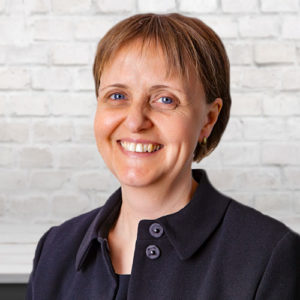Stephen Lieber has been president and chief executive of the Healthcare Information Management Systems Society (HIMSS) since 2000. In December, he announced that he would be standing down at the end of 2017.
Half way through his final year, Lyn Whitfield from Highland Marketing asked him to reflect on his experience of world-wide efforts to digitise healthcare, into HIMSS’ growth into a global organisation, and on what comes next.
Q: You have headed up HIMSS for almost 20 years. What have been the biggest changes that you’ve seen in healthcare IT over that time?
A: The biggest change has been the establishment of what I would say is the global, ubiquitous use of the electronic medical record as the record for the patient. That idea, that there needs to be an electronic record of information about the patient, that we need to be managing information electronically, is the root of everything else that has happened beyond it. Analytics, machine learning, AI… they are only possible because of the electronic record.
Q: But the development and deployment of EPRs has not been easy or uniform, has it? Some countries are much further ahead than others.
A: There is no doubt that there has been an uneven take up of systems. Even in the US, the wholesale adoption of electronic patient records did not start states-wide until 2010 or so. And even then, the US was not the furthest advanced; it was just the biggest market.
Other countries have had limited resources, so their ability to progress this alongside the other issues that governments need to think about have been limited. Although I often point to Spain and Turkey as two examples of economies that are not huge in terms of their growth or the resources at their disposal that have still taken a strong position on technology-driven health.
This is what HIMSS is all about [HIMSS describes itself as a cause-based, non-profit organisation that is focused on better health through information technology]. It is here to spread knowledge from around the world so that people can see where technology might fit into their systems.
Q: So what are the key factors that drive progress, or hold it back?
A: I would say two things. The first is money. In the US, there was investment in 2009-15 [after President Barack Obama signed the Health Information Technology for Economic and Clinical Health or HITECH Act, which released tens of billions of dollars for federally approved systems]. That led to the near universal adoption of electronic medical records.
Canada has put almost no resources into information systems and according to the metrics that we use it has a low level of digital maturity. The second thing that I would point to, and that I would give almost equal weight to, is national leadership. If you decide this is not important to your country, it will not happen. Resourcing and national leadership are the key factors for whether technology has become embedded in healthcare, or there has been very little change, over the past ten years.
Q: What about England, though?
A: It’s true that at the same time as the US investment in EMRs was being made there was a similar process to try and bring technology into hospitals in England [via the National Programme for IT in the NHS, which appointed large firms as local service providers to deploy centrally-contracted systems to trusts]. And it did not work. It was terribly disruptive. It stopped progress for a long time.
It was a really significant case of failure, because it sort of froze the NHS. Political will and capital to try again was not there for several years; and the big lesson that we need to understand from it is just what happens if you fail.
Q: I read that when you took over HIMSS it had just 30 employees [it now has nearly 400 globally]. What have your aims been for the organisation?
I can break this into several segments. The first was addressing challenges in the US market. So [during the first administration of President George W Bush] IT adoption in healthcare was infrequent and uncoordinated. Academic centres – teaching hospitals – which had more resources -were leading. So, we spent a lot of time trying to promote that and to make people aware of what was going on.
Then, we got the Bush administration to make a statement in support of that [in his state of the union address in 2004, Bush outlined an ambition to “make sure that most Americans have electronic health records within ten years”]. And then the Obama administration came in and put money behind that.
Then, in 2006, we made a strategic decision that nothing about our mission was constrained by borders, so we started growing outside [US] borders. We now operate in 40-45 countries around the world. But we do the same thing we have always done in terms of helping people to understand the value of information technology and the barriers to adopting it, and creating case studies to show them how they can be overcome.
Q: HIMSS is well known for its huge, annual US conference. You’ve launched a show in England: eHealth Week. What else are you doing in the UK?
A: Our focus in England has been on developing people with the right skills to implement technology. We are very much part of the NHS Digital Academy [an initiative recommended by Professor Robert Wachter in his recent review of NHS IT, which is being taken forward by NHS England]. We hope to work with that through CHIME [the College of Healthcare Information Management Executives, a global professional organisation] because has a very well developed curriculum around development.
The second thing is using EMRAM [the eight stage EMR Adoption Model developed by HIMSS]. It’s a methodology for understanding where you are, and for doing gap analysis, and for using that as a blueprint or directional map for improving digital maturity. The global digital exemplars [the 12 acute and seven mental health trusts chosen for additional funding by NHS England after the Wachter Review] and the fast followers are focused on levels six and five.
Q: Can you say a bit more about how the exemplars will work with the EMRAM model?
A: Reaching levels six and five is built into the expectations being put on the global digital exemplars and the fast followers. We do not evaluate products – there are many applications out there. What we can do is provide consultative support and help them understand the challenges of getting to one of those levels.
Now, we recognise the limitations of EMRAM. We know it is focused on the acute sector, and everybody wants to focus on continuity of care, and we are talking [to the NHS] about our other models. But what I would say is that you have to start somewhere.
You have to have… I want to say modest, but that’s not quite the right word… ambitions. Because by focusing on those you will create gains across the continuum of care. In Scandinavia, physician practices went first and in the US it was hospitals. The point is you have to start somewhere, and then you move on. So, I am very encouraged by the global digital exemplar and the fast follower programme. I think it is an example of very smart thinking in terms of where to put relatively limited resources in order to achieve measurable gain.
Q: What are you going to do next? Nobody in healthcare IT seems able to imagine you retiring and not being involved in some way.
A: I will stay engaged in this area in some way. I have spent so long engaged in healthcare technology, and so much time in countries around the world, that I have insights into what different places are dealing with, and I want to use those in some way.
The first six months since I announced I was standing down have been exceptionally busy, but everybody slows down in June and July and I will start thinking about the future then. I cannot see myself getting a fishing rod and just fishing. But I do spend a lot of time on the road and my wife would like me to spend a bit more time with her.
Q: Overall, where do you think healthcare technology has got to? And what’s coming next?
A: The summary statement I would make is that that we have made some fine progress, but we still have some major challenges. I am gratified by the role that HIMSS has played, but there’s no doubt that we have issues around security and interoperability. So there is a lot for a new generation of healthcare IT leaders to do, and I hope to contribute to that.”
More about HIMSS: The history of HIMSS goes back to the start of the 1960s, when the first constitution of what was then the Hospital Management Systems Society was drafted, and it held its first convention in Baltimore.
The organisation’s growth started to take off in the 1980s and 1990s as hospitals started to computerise (it acquired the I in 1986). As Stephen Lieber outlined, HIMSS played an important role in encouraging the Bush and Obama administrations to invest in electronic medical records, after which the organisation expanded globally.
HIMSS is now headquartered in Chicago, but describes itself as “a global, cause-based, not for profit organisation focused on better health through information technology.” It has more than 52,000 individual members, 570 corporate members and 225 not-for-profit affiliates; one reason its annual conference can attract more than 35,000 people.
HIMSS Analytics operates the EMR Adoption Model, or EMRAM, that “measures the adoption and utilisation of EMR functions to achieve a paperless environment that harnesses technology to support optimised patient care.”
Some 2,500 hospitals in Europe have been assessed on the EMRAM model, with three reaching stage 7 and around 50 stage six. Three of these are in the UK: Addenbrooke’s Hospital, Croydon University Hospital, and St George’s Hospital.
More about Stephen Lieber: Stephen Lieber studied psychology in Arkansas before studying for an MA from the School of Social Service Administration at the University of Chicago.
He has spent almost his entire career in healthcare. He held a number of administrative, analyst and management posts in Illinois, before becoming chief executive officer of the Emergency Nurses Association. From there, he joined the American Hospital Association as a vice president, before moving to HIMSS in 2000.
Lieber announced his retirement in December 2016, saying: “The past 17 years have been the most exciting and rewarding time of my professional life” and that HIMSS’ work had “resulted in considerable improvements to the quality of care delivered to patients” and to the safety and value of that care. The organisation is still looking for a successor.



